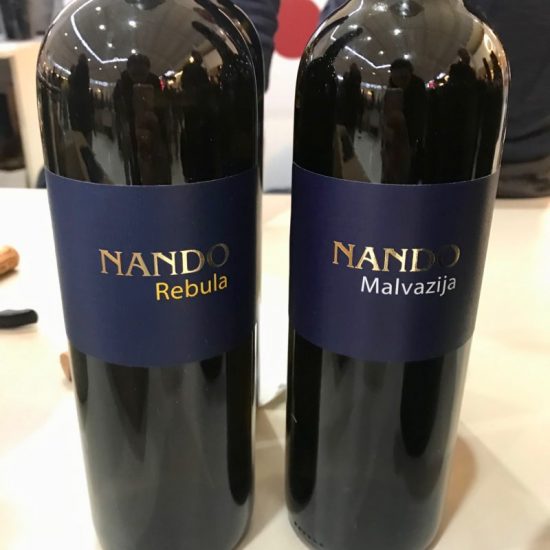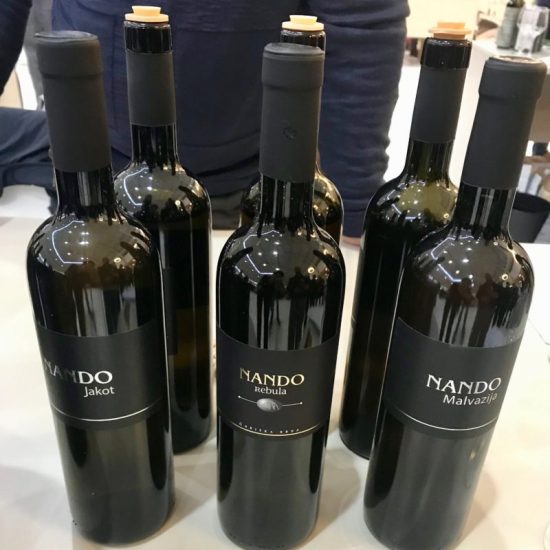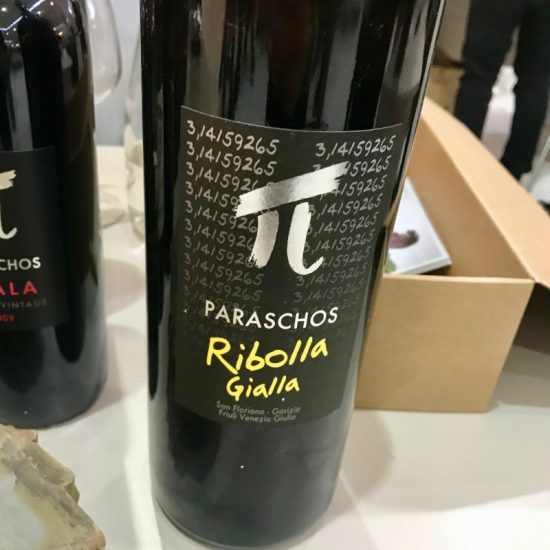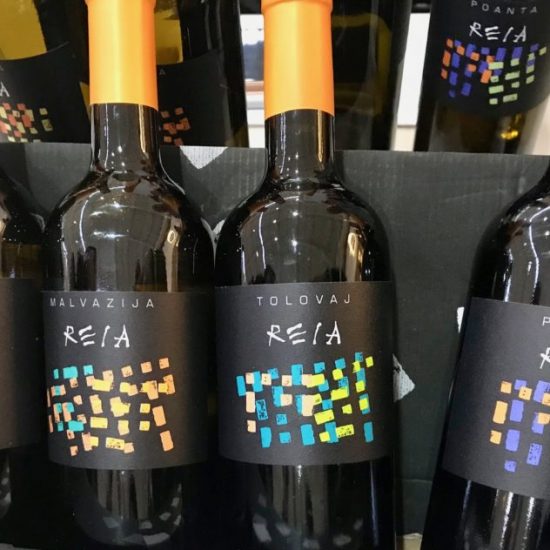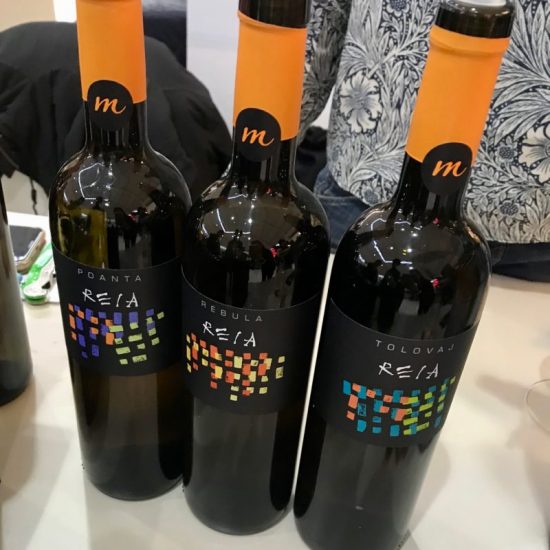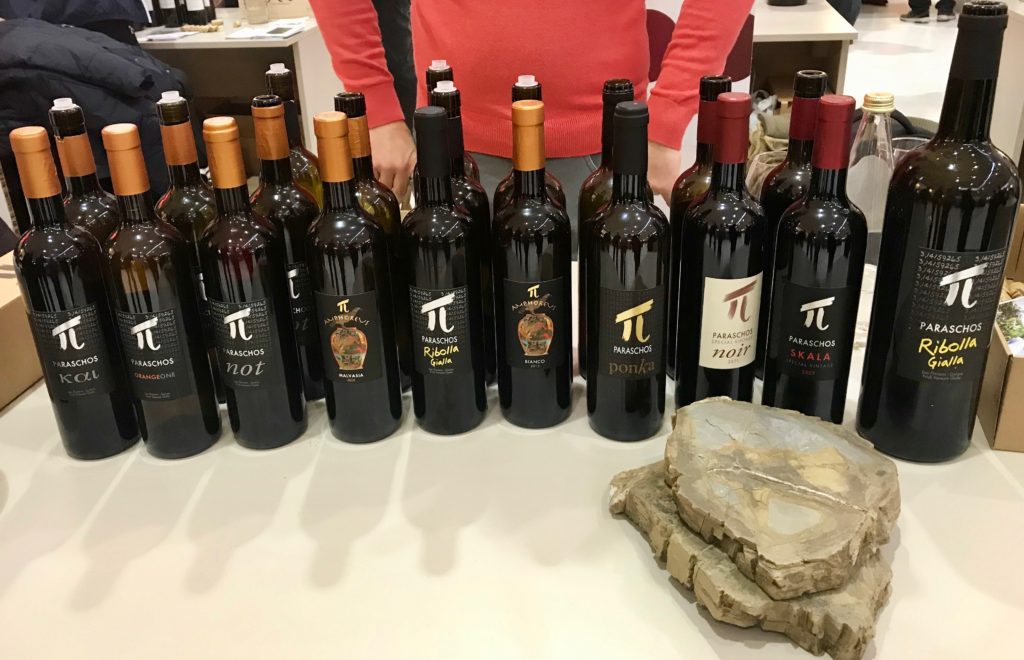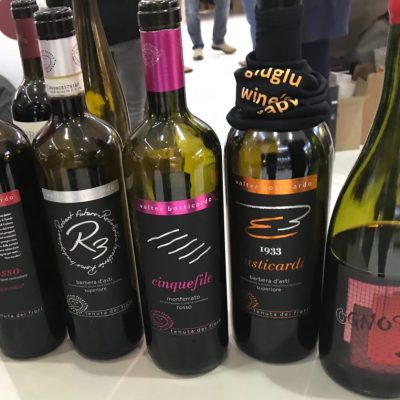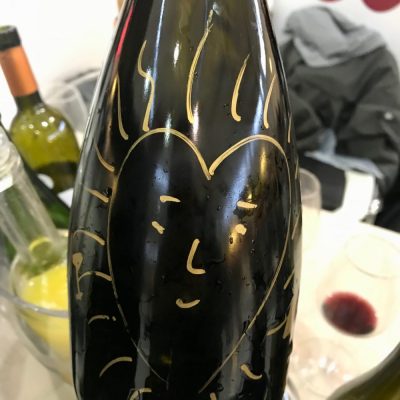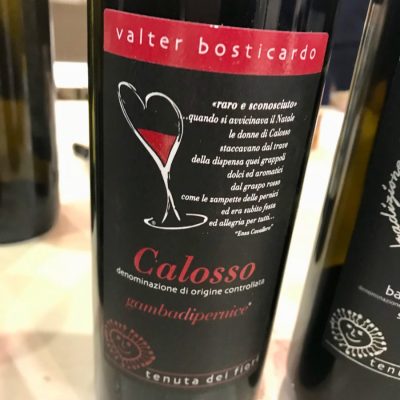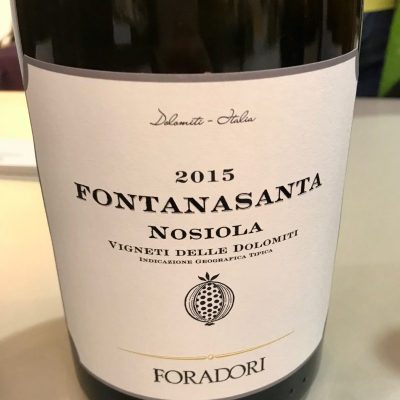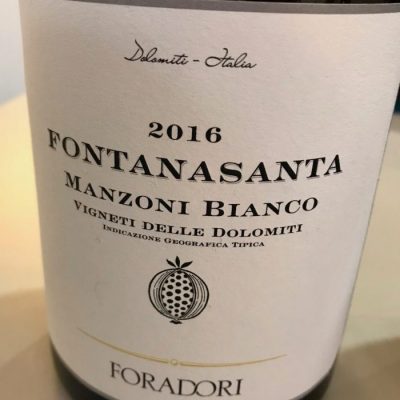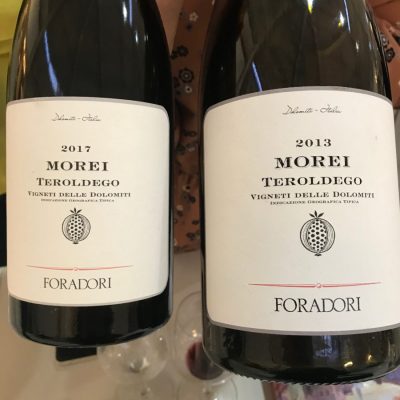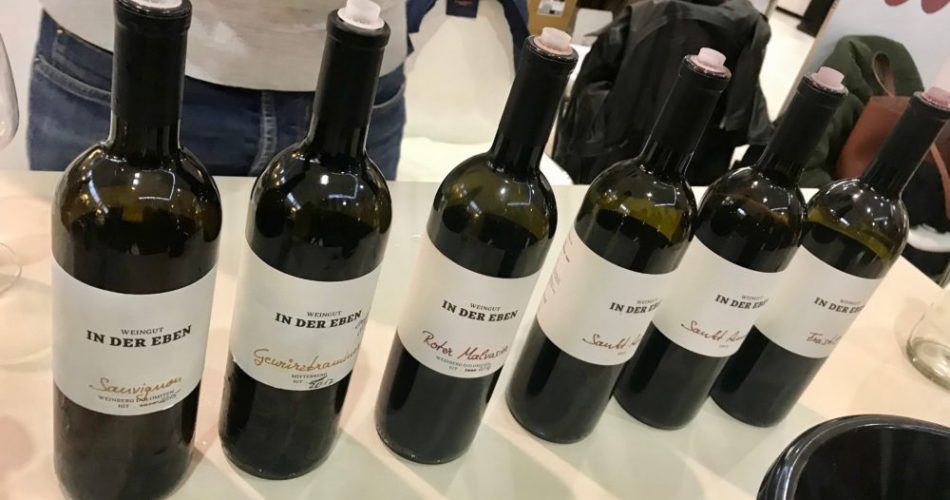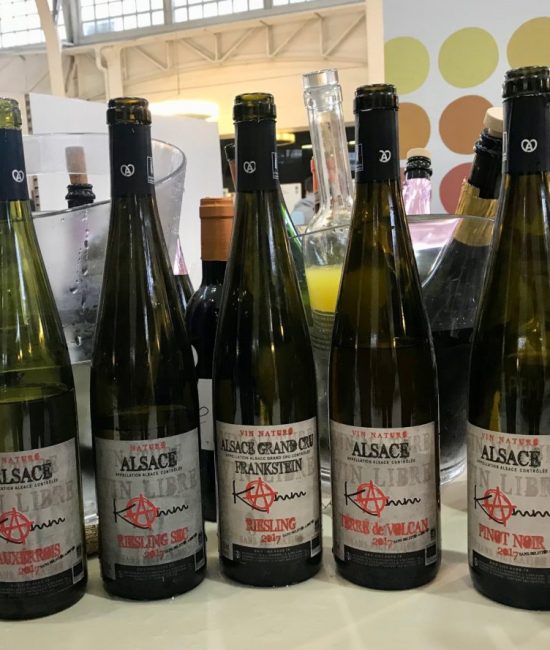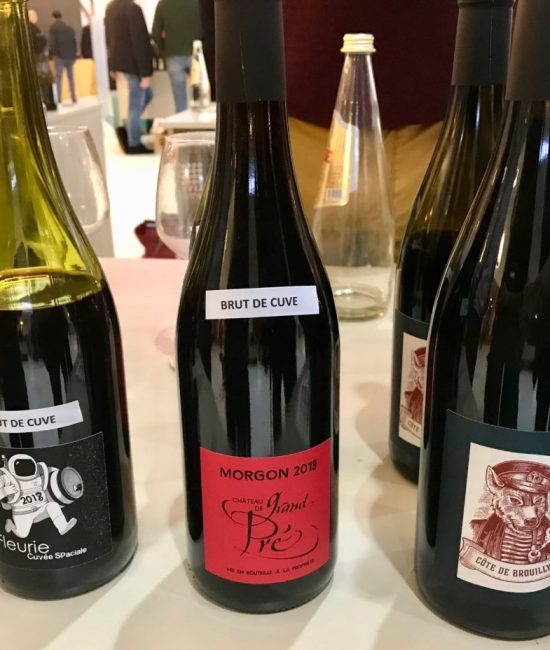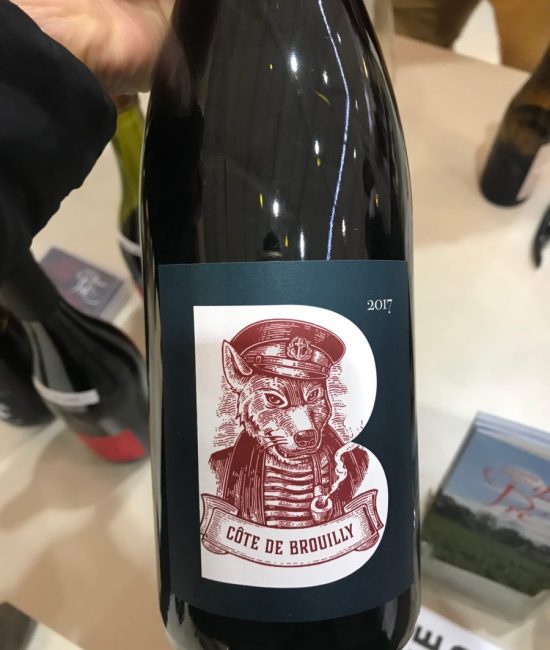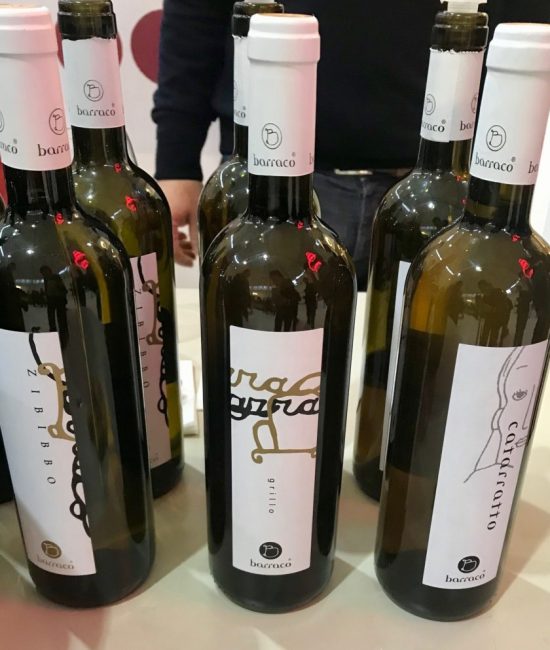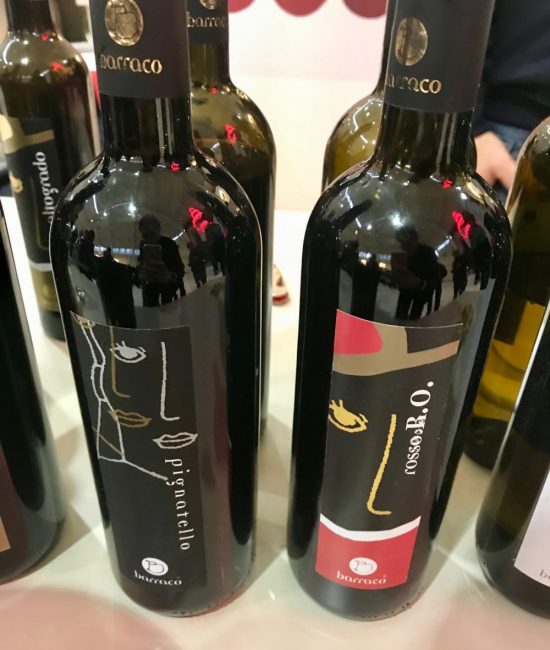Live Wine
Milan 2019
Standouts From
Live Wine Milan - March, 2019
The historic Ice Palace or Palazzo del Ghiaccio, made for a beautiful wine tasting experience on a rainy March day in Milan. Grabbing my bracelet and wine glass, I set out to taste from white to red. At large wine fairs it's very important to have a strategy and do adequate producer research before you arrive, or you will be overwhelmed.
I recommend picking a few key regions of focus for every event you attend. This way you can taste and compare the same grapes and wines across producers within a particular zone. You are able to better understand the history of the area and its indigenous varietals, as well as uncover any newer international plantings or techniques being used.
In addition to regions of focus, definitely have a few classic producers and hard to find wines on your list. These events are great ways to taste boutique small production wines and those established ones that may exceed your normal budget!
Slovenia & Friuli Favorites
I began with Slovenia and went next to Friuli, Italy as to compare these neighboring zones that grow many of the same varietals. My top picks from Slovenia were wines from Nando and Reia from the Brda region in western Slovenian on the Friulian border of Italy. From Friuli, I was impressed by Paraschos‘ wide range of whites and reds.
Nando actually has about half its vineyards in Italy and half in Slovenia. Their blue label wines are done in stainless steel with shorter maceration (typically 12 hours) and reflect a more fresh, young style. The black label wines are made with long macerations up to 40 days in neutral oak barrels. They’re then aged years longer in stainless tanks, whereas the young blue labels see about 6 months before release. Their Rebula and Malvazia wines take on new flavors and complexity with the black label bottlings. Both styles are very well made and can be drunk on different occasions.
Similarly, Reia does two bottlings, with their orange necked “M” line standing for macerated. While I enjoyed all of Reia’s wines, the one that impressed me most was the 2015 Tolovaj made from 100% Sauvignonasse (a cousin of Sauvignon Blanc) and also called Sauvignon Vert. In Friuli, Italy, these wines are now known as simply Friulano. Prior to 2007 however, they were called Tocai Friulano but have since had to drop the Tocai as to not be confused with wine from the Tokaj region of Hungary.
If you’ve never tasted these versatile and subtle wines from Slovenia or Italy, you are very much missing out. Reia’s is light and floral at first, but unfolds with more fruit complexity and ends with an ashy, flint-like finish. For me, it was similar to Hungarian Furmint, but with less pronounced acidity.
Moving into Friuli, Italy, I found a diverse offering of typical and unique wines from Paraschos. I highly suggest trying any of their wines you come across, but my favorites were the Kai (Friulano grape as mentioned above), 2016 Ribolla Gialla and surprisingly the 2009 Skala which is 100% Merlot. The 80 year old vine Kai is made with 3-5 days of skin maceration giving it a more aromatic and full body than other examples I’ve had. This also comes from the 2 years aging on the lees in large oak casks. The Ribolla Gialla sees 8 days of skin contact and also ages at least 2 years on the lees in large oak. The Skala Merlot from 90 year old vines sees up to 5 years of aging on the lees, creating a harmonious and delicious wine. Silky and fruit-driven like Merlot should be, but with more structure and vibrance than I’ve ever tasted in a Merlot. Additional producers making top wines in Friuli are Marco Sara and Villa Job.
Piedmont & Trentino-Alto Adige
A great discovery I had in Piedmont was that of Tenuta Dei Fieri. Their Calosso label, from the Gamba di Pernice varietal, a native red grape they are actively saving from extinction, was fantastic. I had the 2012 vintage which was ready to drink now but could likely develop even further. Hard to describe, but it came across with the spiciness and medium tannins of Cabernet Franc. Their sparkling Moscato (bottle with the heart sun bottle) was also excellent.
In addition to exploring new vineyards, I was very excited to taste the superb wines from renowned winemaker, Elisabetta Foradori. She has been a pioneer in biodiversity and natural winemaking since 2002, after converting completely to biodynamic winemaking. In 2009 they also gained Demeter certification a difficult and exceptional feat. This was after initially working with more conventional methods that had been in place from her father’s generation in the Trentino Alto Adige region of northern Italy close to Austria. Through years of relentless research, replanting, and respecting the land, she is now making exceptional, unadulterated wine and leading the way for generations to come.
Her deliciously unique Nosiola is an ancient, native white grape fermented and aged in amphorae for 8 months with the skins. Its pear, lemon and herbal notes contrast perfectly against its somewhat oily and nutty texture. It’s age-worthy with tons of personality, I suggest everyone seek out Nosiola.
I also loved the two vintages of Foradori’s flagship Teroldego red wines. The 2017 Morei Teroldego was fruit-forward with enough bold spice and tannins to make you realize this is not an ordinary wine. This native or indigenous grape, said to be a cousin of Syrah, is almost exclusively grown in the Trentino-Alto Adige region.
Historically, Teroldego was typically drunk young and not regarded as age-worthy. Tasting the 2013 vintage proved otherwise. The tannins were softer and some of the spicier characteristics were more mellow and integrated, making for a delicious wine that was still full of life. These Teroldego wines represents the 2.5 hectare (6 acre) single vineyard Morei site, alongside the Noce river and its distinctive alluvial soils. They are fermented for 8 months in amphorae as to truly represent the specific terroir of this area.
Rounding out northern Italy, my friend introduced me to a young winemaker he had heard about recently. We were able to taste with Urban Plattner, the young winemaker behind In Der Eben in South Tyrol, close to Bolzano, Italy. Taking over for his father Johannes, he is continuing to showcase the great wines of the Isarco Valley. Organically certified since 1993, years prior to Foradori, Urban is dedicated to increasing the biodiversity of the land and his grape varietals.
Once almost all planted to Schiava, they now grow Sauvignon Blanc, Gewurztraminer, Schiava, St. Anna (Vernaccia), Merlot and the rare Malvasia Rosso (or Roter meaning red in German). The Malvasia Rosso, is very delicate and hard to grow native red grape, similar to Pinot Noir. With bright red fruit, the 2016 was tart and acidic with a great mouthfeel. In addition, his unique 2015 Sauvignon Blanc really impressed me. As his wines are unfiltered, the Sauvignon Blanc was hearty and earthy with much more bitter grapefruit peel notes, rather than the fleeting and herbaceous expressions I’m used to.
Alsace & Beaujolais, France
Taking advantage of the French presence at the fair, I decided to take a tour of the Alsace and was really intrigued. Alsace lies along the Rhine River and Vosges Mountains in northeastern France, an area that was only reclaimed from Germany in 1918. Haven’t had the chance to drink too many natural wines from this region, I was excited to try the wines from Kamm, which are unfiltered and have no sulfites added.
Despite its tumultuous past, Alsace now has 51 Grand Cru vineyard designations producing top quality wines, 90% of which are white. One of those Grand Crus called Frankenstein, is home to Kamm’s 2017 Riesling. Aromatic, intensely acidic and mineral, it’s an elegant yet sturdy Riesling. My other favorite was the Terre de Vulcan Pinot Gris. Grown in volcanic soils, this Pinot Gris was floral, round with honey notes and balanced acidity. Both Kamm’s wines are aged in large oak, the Riesling for 10 months and Pinot Gris for 18.
Beaujolais was my next stop. Located in south-central eastern France north of Lyon, Beaujolais isn’t exactly world renowned for serious wines. While Burgundy, its famous northern neighbor takes all the notoriety for Pinot Noir and Chardonnay, Beaujolais does have interesting and notable wines of its own. I see the regions as complimentary rather than in competition with one another.
Standing out were the Cru Beaujolais Gamay varietal wines from Chateau de Grand Pré in Fleurie. Undergoing carbonic maceration (common for Gamay) for 15-20 days, the grapes are macerated as full clusters in a carbon dioxide rich environment. Without oxygen, the concentrated flavors that develop are dark and rich with their intense aromas also preserved. Indigenous yeast fermentation and lack of filtration is what separates the organic, low-intervention expressions like Grand Pré’s from the more straightforward Gamays of the area. For me, these methods result in a more structured and earthy quality that balances the ripe, fruit-forward aroma and body.
Each of their Cru wines (Fleurie, Morgon and Côte de Brouilly) represent different aspects of the 10 total Villages from which they hail. I for one lean towards the more acidic and crisp Côte de Brouilly. This wine can easily pair with pizza, meats, cheeses and leaner meats.
Sicilian Classics
As always, I wanted to revisit some familiar Sicilian wines and taste a few new ones. Sicily is always improving, expanding and impressing me. I headed to Barraco to try their fantastic Grillo white wine, and it was as good as I remembered it to be. Salty, round, acidic and vibrant, I could picture myself drinking it with a plate of fresh seafood in Sicily. The Zibibbo or Moscato d’Alessandria, as its also called in Sicily was my second favorite. It was more crisp, light bodied and citrusy, but equally as great.
The reds from Barraco, which is located in northwest Sicily, in the region of Marsala are special as well. Barraco makes an unassuming and versatile Pignatello (also called Perricone), a rare native grape. With the acidity of Barbera and enough tannin structure to back it up, it can be perfect on its own or with a range of food. Often blended with other Sicilian red grapes like Nero D’avola, Frappato or Nerello Mascalase, it’s definitely worth trying on its own.
